15th Expeditionary Mobility Task Force
| 15th Expeditionary Mobility Task Force | |
|---|---|
|
22d ARW Boeing KC-135R-BN Stratotanker 57-1486 taking off.
Boeing C-17A Globemaster III 06-6155 of the 21st Airlift Squadron, 60th AMW | |
| Active |
30 October 1943 – 15 September 1945 31 March 1946 – 19 March 2012 |
| Country |
|
| Branch |
|
| Engagements |
World War II - EAME Theater |
| Decorations |
Air Force Outstanding Unit Award (10x) |
| Commanders | |
| Notable commanders |
Nathan Twining James Doolittle Archie J. Old Jr. |
| Insignia | |
| Emblem of the 15th Expeditionary Mobility Task Force |
 |
The Fifteenth Expeditionary Mobility Task Force (15 EMTF) was one of two EMTFs assigned to the United States Air Force Air Mobility Command (AMC) and was headquartered at Travis Air Force Base, California. The 15 EMTF was inactivated on 20 March 2012 and its functions and responsibilities assumed by Eighteenth Air Force (18 AF).[1]
15 EMTF provided strategic and theater airlift for all United States Department of Defense agencies as well as air refueling for the Air Force in both peace and wartime. Primary aircraft assigned to its units were the C-5 Galaxy, C-9 Nightingale, C-17 Globemaster III, C-21, C-130 Hercules, KC-10 Extender, and KC-135 Stratotanker.
15 EMTF was a redesignation of Fifteenth Air Force, effective 1 October 2003. Established on 1 November 1943, Fifteenth AF was a United States Army Air Forces combat air force deployed to the European Theater of World War II, engaging in strategic bombardment operations from bases in southern Italy and engaging in air-to-air fighter combat against enemy aircraft.
During the Cold War, 15 AF was one of three Numbered Air Forces of the United States Air Force Strategic Air Command (SAC), commanding USAF strategic bombers and missiles on a global scale. Elements of 15th Air Force engaged in combat operations during the Korean War; Vietnam War, as well as Operation Desert Storm.
World War II

Fifteenth Air Force (15th AF) was established on 1 November 1943 in Tunis, Tunisia as part of the United States Army Air Forces in the World War II Mediterranean Theater of Operations as a strategic air force and commenced combat operations the day after it was formed. The first commander was General Jimmy Doolittle.
15th AF resulted from a reorganization of Doolittle's Twelfth Air Force into the 15th with Doolittle in command, and the Ninth Air Force (9th AF) with Lewis H. Brereton in command. The new air force was activated with a strength of ninety B-24 Liberators and 210 B-17 Flying Fortresses, inherited from the Twelfth Air Force and Ninth Air Force. In December, new groups, most of which were equipped with B-24s soon started arriving from the United States. Thirteen new groups were added.
It was hoped that the 15th AF stationed in the Mediterranean would be able to operate when the Eighth Air Force (8th AF) in England was socked in by bad English weather. The 9th AF would later move to England to serve as a tactical unit to take part in the invasion of Europe. Once bases around Foggia in Italy became available, the 15th was able to reach targets in southern France, Germany, Poland, Czechoslovakia, and the Balkans, some of which were difficult to reach from England.
Operational Units
- 5th Bombardment Wing (B-17 Flying Fortress) "Y" Tail Code
- Transferred from: Twelfth Air Force
- Headquartered: Foggia, Italy, 13 December 1943 – 2 November 1945
|
|
Airfields: Amendola Airfield (2d BW), Celone Airfield (463d BW), Cerignola Airfield (97th BW), Foggia (2d BW, 463d BW), Lucera Airfield (301st BW), Manduria, (68th RG), Maricianise (97th BW), Sterparone (483d BW), Torotella (99th BW, 483d BW)
- 47th Bombardment Wing (B-24 Liberator) "The Pyramidiers" "Triangle" Tail Code
- Transferred from Ninth Air Force
- Headquartered: Manduria, Italy, 11 November 1943 – May 1945
|
|
Airfields: Brindisi (98th BG), Grottaglie (449th BG), Lecce (98th BG), Manduria (98th BG), San Pancrazio (376th BG, 450th BG)
- 49th Bombardment Wing (B-24 Liberator) "Red Tail"
- Transferred from Greenville AAB, South Carolina 6 April 1944
- Headquartered: Bari Airfield, Italy, 6 April 1944 – 16 October 1945
|
|
Airfields: Gioia del Colle (451st BG), San Pancrazio (451st BG), Torretta (484th BG)
- 55th Bombardment Wing (B-24 Liberator) "Yellow/Black Tail"
- Transferred from: MacDill Field, Florida
- Headquartered: Taranto, Italy, March 1944 – July 1945
|
|
Airfields: Gioia (464th BG), Pantanella (465th BG), Spinazzola Airfield (460th BG), Venosa Airfield (485th BG)
- 304th Bombardment Wing (B-24 Liberator) "Black Diamond"
- Activated in Italy
- Headquartered: Cerignola Airfield, Italy, 29 December 1943 – September 1945
|
|
Airfields: Giulia Airfield (455th BG), San Giovanni Airfield (454th BG, 455th BG, 456th BG)
- 305th Fighter Wing (Provisional) (P-38 Lightning)
- Transferred from Twelfth Air Force, 1943
- Headquartered:
|
|
|
Airfields: Gioia del Colle Airfield (1st FG), Leisna (14th FG 82d FG), Salosa (1st FG), Triolo Airfield (14th FG), Vincenzo Airfield (82d FG)
- Activated in Italy
- Headquartered:
|
|
|
|
Airfields: Capodichino (332d FG), Cattolica (332d FG), Madna Airfield (52d FG), Mondolfo (31st FG. 325th FG), Montecorvino (332d FG), Piagiolino (52d FG), Ramitelli (332d FG), Rimini (325th FG), Vincenzo Airfield (325th FG)
.* Sent to Aghione, Corsica from 10–21 August 1944 for Operation DRAGOON (Invasion of Southern France)
- 15th Special Group (Provisional)
- Reported directly to Fifteenth Air Force
- Assigned to 15th Air Force in June 1944
- Stationed at Brindisi
- Re-designated 2641st Special Group (Provisional)
- 859th BS flew Carpetbagger operations out of England until September 1944 before being moved to MTO
- 885th BS was initially known as 122nd BS assigned to 68th Reconnaissance Group operating B-17s in the MTO. Assigned to the 15th Special Group in January 1945.
- Activated in Italy, 29 December 1943, No units assigned until 13 June 1945
- Headquarters: Torremaggiore, December 1944 – September 1945
|
|
Initial Operations
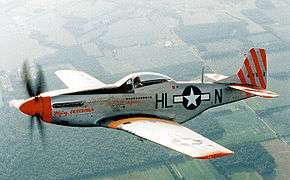



The 15th Air Force began its operations on 2 November 1943, attacking the Messerschmitt factory at Wiener Neustadt, Austria. On 1 December 1943, the Headquarters was moved to Bari Airfield, Italy.
On 4 January 1944, Fifteenth, along with Twelfth Air Force were organized into Mediterranean Allied Air Forces, along with the Royal Air Force 205 Group. MAAF was the southern component of U.S. Strategic Air Forces, Europe, the overall USAAF command and control organization in Europe.
The first major operation carried out by Fifteenth Air Force was bombing missions in support of the Anzio Landings in Italy, Operation Shingle beginning on 22 January 1944. Strikes on German and fascist Italian targets were carried out and caused widespread damage to Axis forces.
Big Week
"Big Week" was the name of an intense Eighth and Fifteenth Air Forces series of attacks on Germany in a series of co-ordinated raids on the German aircraft industry. The plan, code-named "Operation Argument", was to use both American strategic air forces in Europe, with support by the Royal Air Force with night bombing raids to destroy or seriously cripple the German ability to produce combat aircraft.
The Americans were facing strong Luftwaffe fighter opposition to their daylight bombing raids over Nazi-occupied Europe, and it was planned to initiate Operation Argument at the earliest possible date.
On 22 February 1944, Fifteenth Air Force made its first attack on Germany, with an attack on Regensburg. The Fifteenth dispatched a force of 183 bombers to the Oberstraubing Messerschmidt assembly plant. Some 118 bombed with good results but fourteen were shot down. The next day the 15th sent 102 bombers to the Steyr ball-bearing works in Austria where they destroyed twenty percent of the plant. On 24 February, over 180 Liberators inflicted considerable damage to the Messerschmitt Bf 110 assembly plant at Gotha, losing 28 aircraft. On 25 February 114 B-17s and B-24s were dispatched to Steyr again, but the force became separated and the Liberators bombed the Fiume oil refinery instead. Seventeen bombers were lost.
Despite these losses, it was believed that the USSTAF had dealt the German aircraft industry a severe blow.
Oil Industry Targets
In April, General Eisenhower ordered the USSTAF to attack German fuel production centers by striking both the oil refineries and the factories producing synthetic fuels. The 15th started the offensive on 5 April when it dispatched 235 B-17s and B-24s from Italy to transportation targets in the vicinity of the Ploiești oilfields in Romania. The refineries were attacked again on 15 and 24 April, inflicting additional damage.
Attacks on oil targets had assumed top priority by October and vast fleets of heavy bombers, escorted by P-38 Lightning and P-51 Mustang fighters escorted missions to attack refineries in Germany, Czechoslovakia and Romania. The P-51 escorts were able to establish an environment of air superiority, enabling the bombers to roam widely across southern and eastern Europe, attacking targets at Brux in Czechoslovakia, Budapest, Komárom, Győr and Pétfürdő in Hungary, Belgrade and other cities in Yugoslavia and Trieste in north-eastern Italy.
Soviet Support
By June 1944, the 15th Air Force was bombing railway networks in south-east Europe in support of Soviet military operations in Romania. Throughout the summer of 1944, Austrian aircraft manufacturing centers at Wiener Neustadt were bombed and oil producing centers were attacked. On 2 June, the 15th Air Force flew its first "shuttle" mission when 130 B-17s and P-51 escorts landed in Russian controlled territory after a raid in Hungary. Two more shuttle missions followed.
Operation Anvil
In July, the 15th began attacking targets in Southern France in preparation for Operation Anvil, the invasion of Southern France. Marseilles, Lyon, Grenoble and Toulon were all attacked by B-24s and B-17s.
The end of the Third Reich
An historic 15th Air Force operation mission occurred on 24 March 1945 when 666 bombers struck Berlin, Munich, and other German targets as well as Czechoslovakia. The Berlin force was attacked by Me 262 jets that inflicted losses (ten bombers and five fighters) while the Mustangs claimed eight jets downed. Despite their speed, the German jets were too few and produced too late to stop the Allied aerial armadas from simply overwhelming the Luftwaffe and leveling their targets.
The last major effort came on 25 April when 467 bombers struck rail targets in Austria, severing communications into Czechoslovakia. The 15th's final bombing mission was flown 1 May when 27 B-17s attacked Salzburg rail targets. With the German surrender in Italy, 15th Air Force aircraft began dropping supplies over Yugoslavia and evacuating Allied prisoners of war.
A total of around 2,110 bombers were lost on operations by its fifteen B-24 and six B-17 bombardment groups, while its seven fighter groups claimed a total of 1,836 enemy aircraft destroyed. The Fifteenth was inactivated in Italy 15 September 1945.
Postwar era in late 1940s
On 31 March 1946, Fifteenth Air Force was reactivated at Colorado Springs AAB, Colorado and assigned to the ten-day-old Strategic Air Command. 15th AF assumed the assets and personnel of the former Continental Air Forces Second Air Force, which was inactivated on 30 March.
The original bomb groups assigned to 15th Air Force were:
|
|
.*Group became subordinate element to wing.
However, demobilization was in full swing and few of these groups were fully equipped or manned. All of these groups were equipped with B-29 Superfortresses, most or all of which were aircraft which returned from Twentieth Air Force groups which returned from the Pacific War. When SAC was established in 1946, its primary bomber aircraft was the B-29. Although there were many in storage they were war-weary. The plane was greatly improved and soon new models, designated the B-50 Superfortress, began joining the inventory replacing the older aircraft.
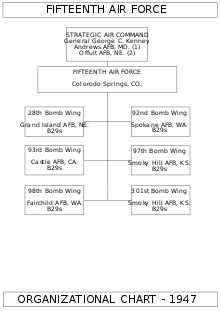

The 15 AF returned to a combat-ready role as a result of the 1948 Berlin Crisis, A squadron from the 301st Bombardment Group was deployed with its B-29s at Fürstenfeldbruck Air Base, Germany. SAC immediately ordered the group's other two squadrons to Goose Bay Air Base, Labrador to prepare for immediate deployment to Germany. The 307th and 28th Bombardment Groups were placed on alert and ordered to be ready to deploy within three and twelve hours respectively. Within a few weeks, the other 301st Bomb Groups squadrons had joined the first. Later on 28 July Bombardment Group left Rapid City AFB, South Dakota for RAF Scampton, in the United Kingdom. The 307th Bombardment Group left MacDill AFB, Florida for RAF Marham and RAF Waddington in the UK.
The 56th Fighter Wing at Selfridge in Michigan left Fifteenth Air Force on 1 December 1948, transferring to Tenth Air Force.
On 7 November 1949, Headquarters Fifteenth Air Force was relocated to March AFB, California. As part of this realignment, Most SAC bomber forces west of the Mississippi River were reassigned to 15th AF. Those east of the Mississippi were assigned to SAC's other strategic air force, Eighth Air Force, was reassigned to Westover AFB, Massachusetts, where it commanded all SAC bases in the eastern United States.
From 1947 onwards Fifteenth Air Force incorporated a number of fighter escort wings and strategic fighter wings, intended to escort bombers to their targets. Among these units were the 56th Fighter Wing, 71st Strategic Fighter Wing, the 82nd Fighter Wing, and the 407th Strategic Fighter Wing. They were all redesignated and transferred to other USAF components in 1957–58 with the end of the fighter escort concept.
Korean War
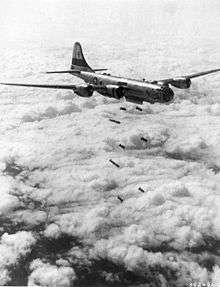
On 25 June 1950, the armed forces of the Democratic People's Republic of Korea (North Korea) invaded South Korea. On 27 June the United Nations Security Council voted to assist the South Koreans in resisting the invasion. President Harry S. Truman authorized General Douglas MacArthur (commander of the US occupying forces in Japan) to commit units to the battle. MacArthur ordered General George E. Stratemeyer, CIC of the Far Eastern Air Force (FEAF) to attack attacking North Korean forces between the front lines and the 38th parallel.
At that time, the 22 B-29s of the Twentieth Air Force 19th Bomb Group stationed at Andersen Field on Guam were the only aircraft capable of hitting the Korean peninsula, and this unit was ordered to move to Kadena Air Base on Okinawa and begin attacks on North Korea. These raids began on 28 June. On 29 June, clearance was given for B-29 attacks on airfields in North Korea.
On 8 July, a special FEAF Bomber Command was set up under the command of Major General Emmett O'Donnell. Although President Truman wasn't willing to risk extensive use of the U.S. bomber force in the United States, which was being used as a deterrent for possible Soviet aggression in Europe, a few groups of B-29 bombers – that were not part of the nuclear strike force – were released. On 13 July, the FEAF Bomber Command took over command of the Twentieth Air Force 19th Bombardment Group and of the Fifteenth Air Force's 22nd and 92nd Bombardment Groups which had been transferred from SAC bases in the United States. Later in July, the Fifteenth Air Force 98th and 307th Bombardment Groups were sent to Japan to join the FEAF. The 92nd and 98th BGs and the 31st SRG operated from bases in Japan, whereas the 19th, 22nd, and 307th BGs were based in Okinawa.
When the Korean War ended on 27 July 1953, the B-29s had flown over 21,000 sorties, nearly 167,000 tons of bombs had been dropped, and 34 B-29s had been lost in combat (16 to fighters, four to flak, and fourteen to other causes). B-29 gunners had accounted for 34 Communist fighters (16 of these being MiG-15s) probably destroyed another 17 (all MiG-15s) and damaged 11 (all MiG-15s). Losses were less than 1 per 1000 sorties.
Cold War
.jpg)
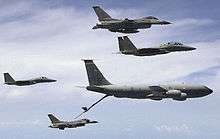
With the end of fighting in Korea, President Dwight D. Eisenhower, who had taken office in January 1953, called for a "new look" at national defense. The result: a greater reliance on nuclear weapons and air power to deter war. His administration chose to invest in the Air Force, especially Strategic Air Command. The nuclear arms race shifted into high gear. The Air Force retired nearly all of its propeller-driven B-29/B-50s and they were replaced by new Boeing B-47 Stratojet aircraft. By 1955 the Boeing B-52 Stratofortress would be entering the inventory in substantial numbers, as prop B-36s were phased out of heavy bombardment units rapidly.
Also after the deployment of forces to Far East Air Force to engage in combat over Korea, the history of Fifteenth Air Force becomes indistinguishable from that of Strategic Air Command. During the Cold War, Fifteenth Air Force aircraft stood nuclear alert, providing a deterrence against an attack on the United States by the Soviet Union. During the Vietnam War, squadrons of 15th Air Force B-52 Stratofortesses (B-52Ds mostly, some B-52Gs) were deployed to bases on Guam, Okinawa and Thailand conducting Arc Light strikes on communist forces.
The 15th Air Force also included missile squadrons, such as the 703d Strategic Missile Wing and 706th Strategic Missile Wing.[2]
Post Vietnam
Between the Vietnam War and 1991, 15 AF units and assets consisted of reconnaissance aircraft (SR-71 until 1989, U-2), bombers (B-52D until 1984, B-52G, B-52H and B-1B), aerial refueling (KC-135, KC-10), and intercontinental ballistic missiles (Titan II until 1984, Minuteman II/III, Peacekeeper). Fifteenth Air Force became exclusively aerial tanker command with KC-135 and KC-10 aircraft on 1 September 1991. When Strategic Air Command was inactivated 1 June 1992 and its assets divided between the newly created Air Mobility Command and Air Combat Command, Fifteenth Air Force became part of Air Mobility Command.
Headquarters Fifteenth Air Force moved from March Air Force Base to Travis Air Force Base on 2 July 1993 with the BRAC transition of March AFB to March Air Reserve Base, and merged its tankers with the airlift aircraft of the Twenty-Second Air Force. The Twenty-Second Air Force's flag moved to the Air Force Reserve Command at Dobbins Air Force Base, Georgia.
As a result of the terrorist attacks on the United States on 11 September 2001, Fifteenth Air Force was redesignated the Fifteenth Expeditionary Mobility Task Force, and was engaged in operations in support of the Global War on Terrorism.
21st-century
Fifteenth Air Force was one of the two numbered air forces assigned to the Air Mobility Command. Headquartered at Travis Air Force Base, California, its main area of operations was the region stretching west of the Mississippi River to the east coast of Africa, pole to pole, but was often tasked to support Air Mobility Command's global reach mission. Its primary mission was to provide strategic and theater airlift for all Department of Defense agencies as well as air refueling for the Air Force in both peace and wartime. This included the aeromedical evacuation of sick and injured.
The task force provided rapid and flexible transportation from six major Air Force bases in the United States and 47 locations throughout the Pacific. More than 71,000 people, including active duty and gained Air Force Reserve and Air National Guard personnel, operated and supported airlift, tanker and aeromedical aircraft as part of the 15 EMTF.
With the assigned military work force of 28,912 personnel and an assigned civilian work force of 5,288 people, Fifteenth Air Force managed almost 300 aircraft and many support facilities in the United States and in the Pacific and Indian Oceans—all the way to Diego Garcia.
Units
Primary operating units of 15 EMTF were:
- Hickam Air Force Base, Hawaii
The 15 AF commander was also the Commander, Task Force 294 (TF 294), which provides aerial refueling to aircraft that support the United States Strategic Command (USSTRATCOM) in time of war. TF 294 includes 26 units from the 18 AF, the Air National Guard, and the Air Force Reserve Command. The 15 AF staff assured the operational readiness of its units by conducting readiness assessment visits and staff assistance visits. It acted as an advocate for its subordinate units and enforces higher headquarters policies and directives.
Lineage
- Constituted as Fifteenth Air Force on 30 October 1943.
- Activated on 1 November 1943
- Inactivated on 15 September 1945
- Activated on 31 March 1946
- Inactivated on 1 October 2003
- Redesignated and activated as 15th Expeditionary Mobility Task Force, 1 October 2003
- Inactivated on 20 March 2012
- Redesignated Fifteenth Air Force on 30 March 2012 (remained inactive)[3]
Assignments
- Headquarters, United States Army Air Forces, 1 November 1943 – February 1944
- United States Strategic Air Forces, February 1944 – 31 March 1946
- Strategic Air Command, 15 September 1946 – 1 January 1992
- Air Mobility Command, 1 January 1992 – 1 October 2003
- Eighteenth Air Force, 1 October 2003 – 20 March 2012
Components
World War II Wings
- 5th Bombardment: 1943–1945.
- 42d Bombardment: 1943
- 47th Bombardment: 1944–1945
- 49th Bombardment: 1944–1945
- 55th Bombardment: 1944–1945
- 304th Bombardment: 1943–1945.
- 305th Bombardment: 1943–1945
- 306th Fighter: 1944–1945
- 307th Bombardment: 1944.
Postwar Air Divisions
- 1st Strategic Aerospace Division, 1 September 1988 – 1 September 1991
- 4th Air Division, 31 March 1970 – 23 August 1988
- 12th Air Division, 10 February 1951 – 16 June 1952; 16 June 1952 – 1 July 1989
- 13th Strategic Missile Division, 1 July 1959 – 1 July 1963; 1 July 1965 – 2 July 1966
- 14th Air Division, 10 February 1951 – 16 June 1952; 16 June 1952 – 1 September 1991
- 17th Air Division, 31 March 1970 – 30 June 1971
- 18th Strategic Aerospace Division, 1 July 1959 – 2 July 1968
- 21st Air Division, 16 July 1952 – 16 October 1952
- 22d Strategic Aerospace Division, 9 September 1960 – 1 July 1965
- 40th Air Division, 7 July 1989 – 14 June 1991
- 57th Air Division, 16 April 1951 – 16 June 1952; 16 June 1952 – 4 September 1956; January 1975 – 14 June 1991
- 58th Air Division, 31 March – 1 November 1946
- 73d Air Division, 31 March – 31 May 1946
- 311th Air Division, 1 May 1946 – 31 March 1947
- 802d Air Division, 28 May 1952 – 1 July 1955; 1 January 1959 – 20 June 1960
- 810th Strategic Aerospace Division, 1 April 1955 – 1 July 1963; 2 July 1966 – 30 June 1971
- 813th Strategic Aerospace Division, 15 July 1959 – 2 July 1966
- 818th Air Division 11 October 1954 – 1 July 1955
- 819th Strategic Aerospace Division, 1 February 1956 – 1 July 1965
- 821st Strategic Aerospace Division, 1 January 1959 – 30 June 1971
Stations
- Tunis, Tunisia, 1 November – 31 December 1943
- Bari Airfield, Italy, 1 December 1943 – 31 March 1946
- Colorado Springs, Colorado, 15 September 1946 – 7 November 1949
- March AFB, California, 7 November 1949 – 1 January 1992
- Travis AFB, California, 1 January 1992 – 20 March 2012
Quotes
I could see omens of the war’s end almost every day in the blue southern sky when, flying provocatively low, the bombers of the American Fifteenth Air Force crossed the Alps from their Italian bases to attack German Industrial targets.— Albert Speer, Hitler's Minister for Armaments, Inside the Third Reich, Memoirs of Albert Speer
Notes
![]() This article incorporates public domain material from the Air Force Historical Research Agency website http://www.afhra.af.mil/.
This article incorporates public domain material from the Air Force Historical Research Agency website http://www.afhra.af.mil/.
- Maurer, Maurer (1983). Air Force Combat Units of World War II. Maxwell AFB, Alabama: Office of Air Force History. ISBN 0-89201-092-4.
- Ravenstein, Charles A. (1984). Air Force Combat Wings Lineage and Honors Histories 1947–1977. Maxwell AFB, Alabama: Office of Air Force History. ISBN 0-912799-12-9.
References
- ↑ Ian, Thompson. "15th Expeditionary Mobility Task Force furls its flag." The Daily Republic, sec. A1, 21 March 2012. http://www.dailyrepublic.com/featured-stories/15th-expeditionary-mobility-task-force-furls-its-flag/ (accessed 22 August 2012).
- ↑ The Cold War and Beyond: Chronology of the United States Air Force, 1947–1997. 7. Government Printing Office. 1997. p. 25. ISBN 9780160491450.
- ↑ Air Force Organization Change Report (March 2012), Historical Division, Air Force Historical Research Agency
- Ambrose, Stephen. The Wild Blue: The Men and Boys Who Flew the B24s over Germany, 1944–1945. New York: Simon & Schuster, 2001.
- Currier, Lt. Col. Donald R. 50 Mission Crush. Burd Street Press, 1992. ISBN 0-942597-43-5.
- Capps, Robert S. Flying Colt: Liberator Pilot in Italy. Manor House, 1997. ISBN 0-9640665-1-3.
- Capps, Robert S. 456th Bomb Group (H): Steed's Flying Colts 1943–1945. Paducah, Kentucky: Turner Publishing, 1994. ISBN 1-56311-141-1.
- Dorr, Robert F. B-24 Liberator Units of the Fifteenth Air Force. Botley, Oxford, UK: Osprey Publishing, 2000. ISBN 1-84176-081-1.
- Harley, R. Bruce. A Brief History of the Fifteenth Air Force, "Aggressive in War, Alert in Peace". Silver Anniversary, 1 November 1943 – 31 October 1968. March Air Force Base, California: Headquarters Fifteenth Air Force, 1968.
- McGuire, Melvin W. and Robert Hadley. Bloody Skies: A 15th AAF B-17 Combat Crew, How They Lived and Died. Yucca Tree Press, 1993. ISBN 1-881325-06-7.
- Millet, Jeffrey R. The Fifteenth Air Force Story: A History 1943–1985. Fifteenth Air Force Association, 1986.
- Rust, Kenn C. Fifteenth Air Force Story...in World War II. Temple City, California: Historical Aviation Album, 1976. ISBN 0-911852-79-4.
- Scutts, Jerry. P-47 Thunderbolt Aces of the Ninth and Fifteenth Air Force. Botley, Oxford, UK: Osprey Publishing, 1999. ISBN 1-85532-906-9.
- Weatherill, David. Aces, Pilots & Aircraft of the 9th, 12th & 15th USAAF. Melbourne, Australia: Kookaburra Technical Publications Pty Ltd., 1978. ISBN 0-85880-032-2.
External links
- 15th Expeditionary Mobility Task Force Factsheet
- The 15th Air Force
- WWII Bomb Groups – European Theater of Operations (ETO)
- 2nd Bombardment Group Association
- The 99th Bomb Group in WWII
- 301st Bombardment Group Heavy
- 463rd Bombardment Group Historical Society
- 461st Bombardment Group Heavy / 764th, 765th, 766th, 767th sqdn
- 483rd Bombardment Group Website
- A website about the U.S.A.A.F.
- B-17 Bombardier with the 463rd BG
- Honor Thy Father: A Tuskegee Airman
- Sgt. Coleman D. Moberly, 463rd BG, Stalag Luft I POW
- Sam Hewitt, 301st BG, Stalag Luft 4 POW
- 15th Army Air Force
- 15th Air Force
- The short film 15 AF HERITAGE – HIGH STRATEGY – BOMBER AND TANKERS TEAM (1980) is available for free download at the Internet Archive
- WWII 450th Bomb Group
- Holy Joe's Squadron – WWII site dedicated to 722nd Bomb Squadron

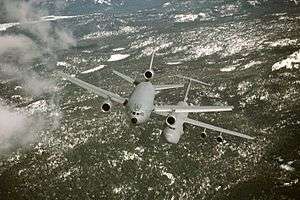


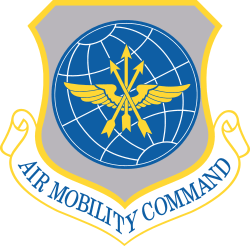

.svg.png)